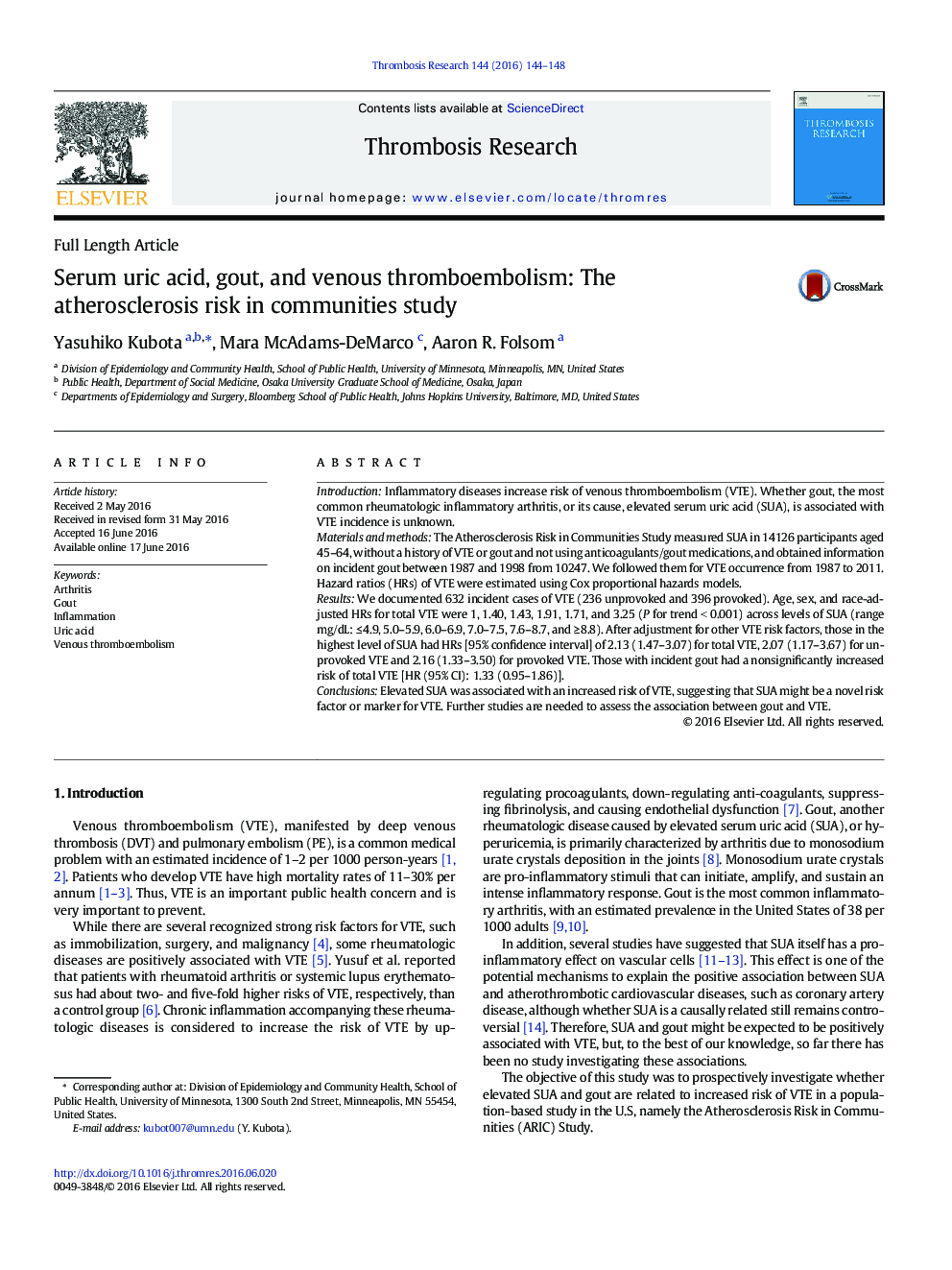| Article ID | Journal | Published Year | Pages | File Type |
|---|---|---|---|---|
| 3026833 | Thrombosis Research | 2016 | 5 Pages |
•Whether serum uric acid (SUA) and gout are associated with VTE is unknown.•We examined the associations of SUA and gout with VTE risk using ARIC study.•Elevated SUA was associated with increased risk of VTE, but gout was not.•Elevated SUA might be a novel risk factor or marker for increased VTE risk.
IntroductionInflammatory diseases increase risk of venous thromboembolism (VTE). Whether gout, the most common rheumatologic inflammatory arthritis, or its cause, elevated serum uric acid (SUA), is associated with VTE incidence is unknown.Materials and methodsThe Atherosclerosis Risk in Communities Study measured SUA in 14126 participants aged 45–64, without a history of VTE or gout and not using anticoagulants/gout medications, and obtained information on incident gout between 1987 and 1998 from 10247. We followed them for VTE occurrence from 1987 to 2011. Hazard ratios (HRs) of VTE were estimated using Cox proportional hazards models.ResultsWe documented 632 incident cases of VTE (236 unprovoked and 396 provoked). Age, sex, and race-adjusted HRs for total VTE were 1, 1.40, 1.43, 1.91, 1.71, and 3.25 (P for trend < 0.001) across levels of SUA (range mg/dL: ≤ 4.9, 5.0–5.9, 6.0–6.9, 7.0–7.5, 7.6–8.7, and ≥ 8.8). After adjustment for other VTE risk factors, those in the highest level of SUA had HRs [95% confidence interval] of 2.13 (1.47–3.07) for total VTE, 2.07 (1.17–3.67) for unprovoked VTE and 2.16 (1.33–3.50) for provoked VTE. Those with incident gout had a nonsignificantly increased risk of total VTE [HR (95% CI): 1.33 (0.95–1.86)].ConclusionsElevated SUA was associated with an increased risk of VTE, suggesting that SUA might be a novel risk factor or marker for VTE. Further studies are needed to assess the association between gout and VTE.
